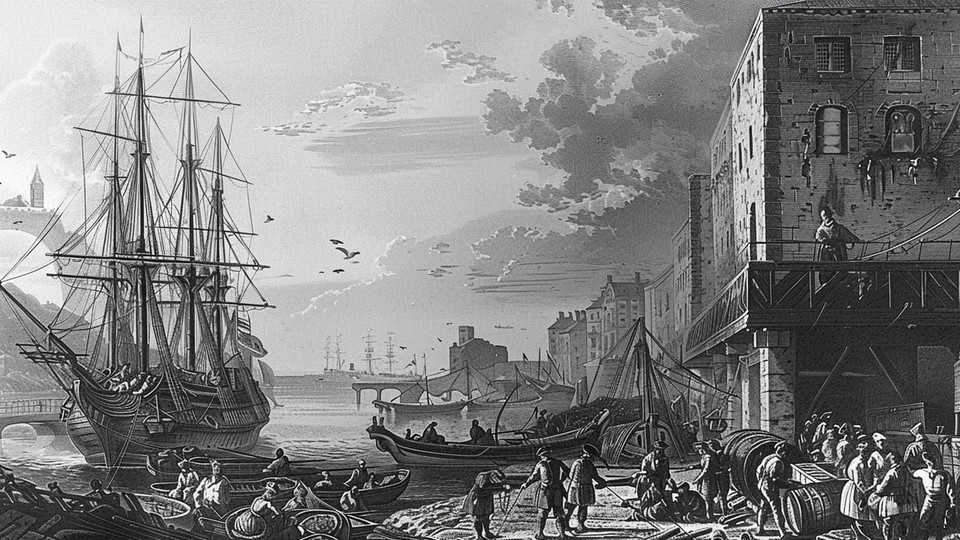Spanish Disintegration and the Old South

In 1786, American foreign secretary John Jay and Diego de Gardoqui, the Spanish foreign minister to the United States, negotiated a treaty that would have benefited Northern trading interests while giving up American navigation rights on the Mississippi River for 25 years. This infuriated Southerners, whose land claims extended to the Father of Rivers, setting the tone for the sectional mistrust that characterized the following decades.
The South was able to block ratification of the treaty, but that wasn't the end of the complicated relationship between its forturnes and those of the Spanish Empire. William C. Davis's The Rogue Republic: How Would-Be Patriots Waged the Shortest Revolution in American History tells how a few thousand American settlers in West Florida – a stretch of territory bracketed by the Mississippi and Apalachicola Rivers and including parts of what are now Louisiana, Mississippi, and Alabama – kicked out the Spanish in 1810 and briefly organized a republic before being annexed by the U.S.
Near the end of the book Davis summarizes the Spanish Empire's continuing deterioration, as seen in 1827 through the eyes of a dying Reuben Kemper, who had been one of the leaders of the anti-Spanish West Floridian resistance:
[Kemper] had witnessed Spain's continuing disintegration at home and abroad. Independence movements commenced in several South American colonies in 1810. Paraguay and Uruguay both gained freedom from Spain in 1811. A junta in Argentina struggled for eight years until 1818 brought independence, while Venezuela spent a full decade in revolt before it succeeded, in 1821. By that time Colombia had gained independence in 1820, followed by Ecuador in 1822, Bolivia in 1824, and Peru in 1825. Chile's junta stood for freedom just a week before Philemon Thomas's army took Baton Rouge, and Chile finally ejected the last of the soldados just months before Reuben came to Natchez for the last time. Revolt had commenced in Mexico exactly one week before the fall of Baton Rouge, and in 1821 Spain gave up, yielding not only Mexico, but Texas, the Southwest, and California. Reuben Kemper had been a part of the first mainland revolt in Spain's New World empire to evict the Spaniards successfully, and now he could know that all that remained of that empire were the islands of Cuba and Puerto Rico. He had helped to realize Jefferson's original conception of the Louisiana Purchase territory, and in his wake America was following its destiny across the continent.
The fall of Napoleon returned Europe to peace, and Britain's concurrent failure to subdue the United States [in the War of 1812] —Reuben Kemper once more lending a hand—freed the new nation to begin transforming itself into a continental power. First Texas won its independence in 1836 and was admitted to statehood in 1845. Then the United States took California and the Southwest—the New Mexico Territory—in 1846 to 1848. From 1860 to 1861, eleven slave states seceded from the Union; six of them—more than half— had been absorbed from Spain: Alabama, Mississippi, Texas, Arkansas, Florida, and Louisiana. Without that half a million square miles of cotton and sugar land so conducive to the spread of slave labor, the remaining slave states could never have challenged federal authority in 1861. When that challenge failed, in 1865, the victorious Union emerged as the dominant power in the hemisphere. Fittingly, it closed out a century that had begun with the acquisition of Louisiana and West Florida with a brief summer's war in 1898 in which Spain lost the last of its American possessions, Cuba and Puerto Rico. The halting and uncertain dance with Spain for land had taken America from confusion and cross-purposes, through unanticipated success, to near self-immolation, and then on to a leading place among the great nations. Coincidentally, the peace treaty ending the Spanish-American War was signed on December 10, 1898, exactly eighty-eight years after the lone star of West Florida went down for the last time in Baton Rouge.
See you next post. If you'd like to get these delivered to your inbox (for free), hit the subscribe button and enter your email address. You may need to check your spam folder for the confirmation email, but I'll never spam you or share your address. You'll just get these posts with the video embedded. (If you use Gmail, you may need to drag the first regular email from your Promotions folder to your inbox, but then you should be good to go.)
